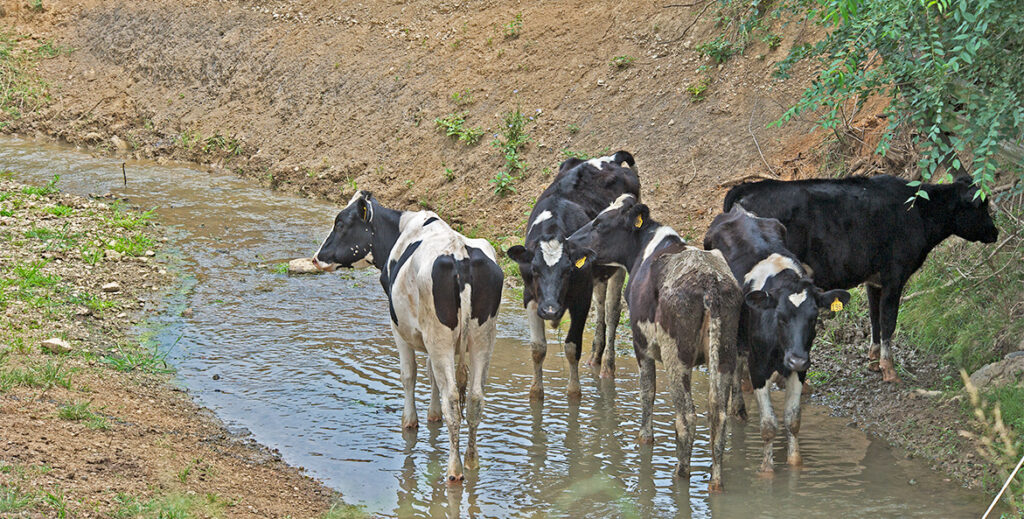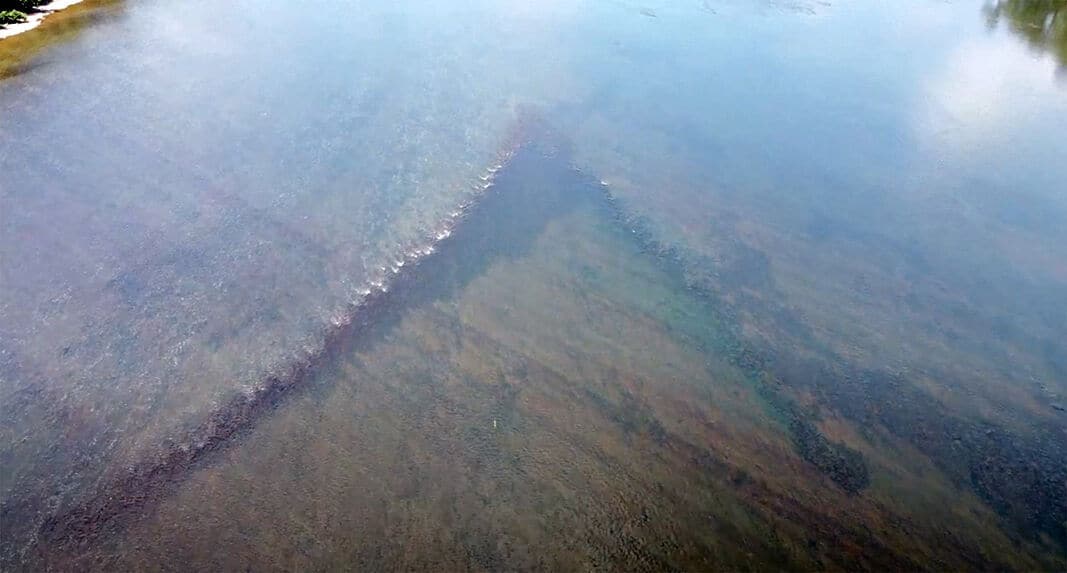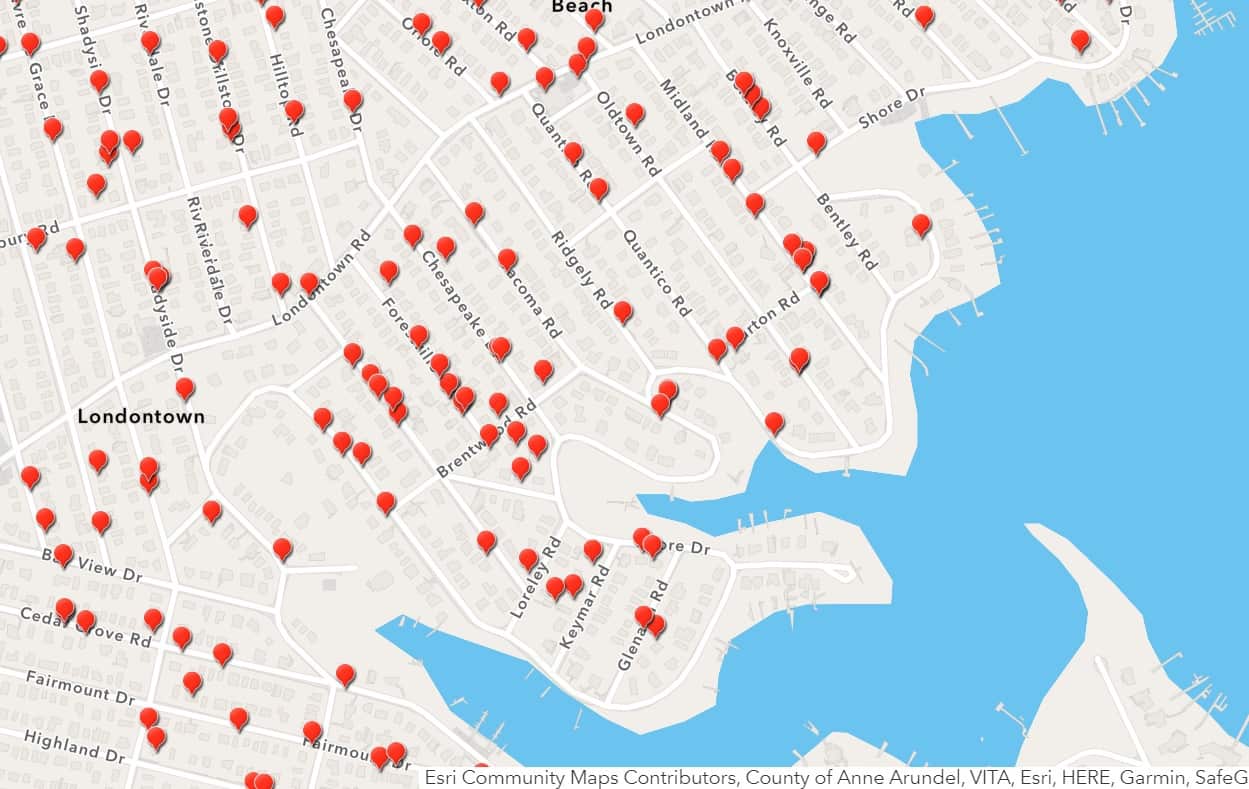A new program to fight farm runoff in Virginia may offer farmers the strongest motivation yet to take action against pollution. The $20 million pilot program doesn’t just offer financial incentives for environmentally responsible farming practices—it gives out payments to farmers based on how much nitrogen and phosphorus they stop from reaching the Bay.
Across the Chesapeake watershed, cost-share programs have been valuable tools to help farmers and other landowners install conservation practices like no-till cropping and rain gardens. But it has been hard to track the actual, on-the-ground, in-the-water benefits. Virginia’s current agricultural cost-share program is also quite limited in which long-standing projects it will pay for. Most, like planting tree buffers along waterways and fencing livestock out of streams, are already supported by Chesapeake Bay Program Partnership computer models.
Now, however, Virginia’s Department of Environmental Quality (DEQ) is rolling out a $20 million Pay-For-Outcomes Nonpoint Source Pollution Reduction grant program, announcing deadlines for proposals and information sessions. Passed in the budget of the 2024 General Assembly, the one-year pilot program will provide farmers payments based on the number of pounds of nitrogen and phosphorus pollution actually removed or prevented from flowing from farm fields and small towns.
The aim is to spur ingenuity and innovation in reducing nonpoint source pollution in a cost-effective way. (Nonpoint source pollution comes from multiple sources and can’t be traced back to a single point.) The bigger the pollution cut a farmer makes, the bigger the payment. Under this flexible program, Virginia farmers and landowners could actually profit from conservation practices that measurably improve water quality in the Chesapeake system.
“This is a prime opportunity for farmers and landowners to earn money for reducing pollution,” said Dr. Joe Wood, CBF’s Virginia Senior Scientist and member of the Scientific and Technical Advisory Committee of the Chesapeake Bay Program. “By paying for results, the state is encouraging innovation and ensuring that our resources are being used to achieve the greatest possible benefit. Farmers know their land best,” Wood continued. “There’s a variety of ways to impact crop yield. In a similar way, a variety of approaches can improve conservation work.”
To get some idea of how the Pay for Outcomes Program might work, we spoke with Wood and Dr. Kurt Stephenson, Professor of Environmental and Natural Resource Economics at Virginia Tech. “First,” said Stephenson, “it’s about stimulating creativity and innovation. The program is looking for new practices like capturing ammonia [gas] from poultry houses and using it as fertilizer. We hope it will bring people to the table in different ways, asking questions like, ‘What’s the reward you need to put in such and such a practice?’ It has the potential to focus specific practices in the most appropriate locations, as opposed to a ‘one size fits all’ approach.”
Beginning in February, a panel of scientists from institutions like Virginia Tech, Virginia Institute of Marine Science, the federal Natural Resources Conservation Service, and DEQ, will review the proposals submitted and select those that offer the most cost-effective and promising approaches.
The questions they ask will include how an applicant plans to demonstrate measurable effectiveness. This is a completely new point of view: no outcome, no pay. An example of an innovative project could be using mapping tools to build conservation projects around runoff flow paths and land contour. A second example could be measuring nitrogen levels in water running out of a spring on livestock grazing land before and after it flows through a wood chip bioreactor.
“Basically,” said Dr. Stephenson, “it’s learning what’s actually happening with our Best Management Practices. Are they actually effective?” Another example could be having a group of farmers come together to reduce pollution loads in a whole creek watershed. This would be a long-term, specific watershed project built around targeted collective action to achieve a profitable outcome.
Applications for the NPS Pilot Pay-For-Outcomes program are due on February 3, 2025. DEQ will hold a mandatory pre-application webinar on January 6, 2025. Click here for more information.




